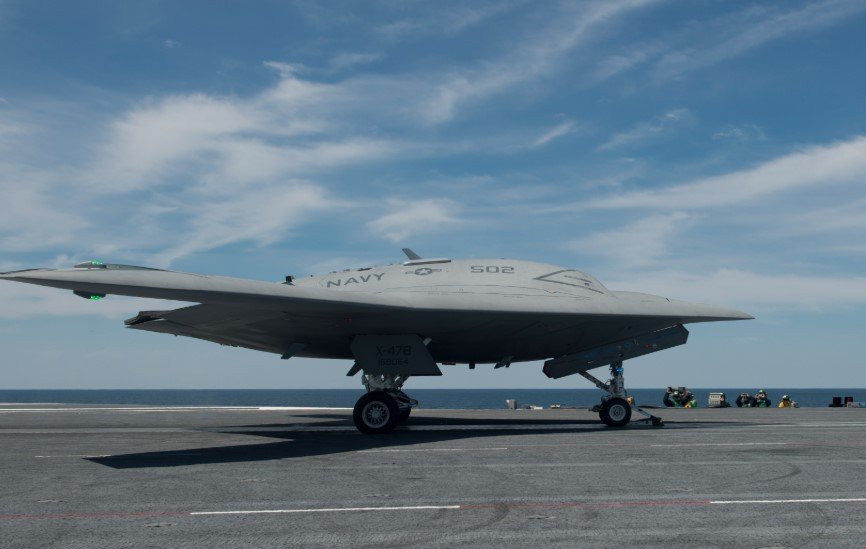The Pentagon’s spending boom is no longer just about jets and carriers. It’s about software, drones, AI—and startups. And with a $1 trillion top-line budget coming in 2026, the Defense Department is rewriting its procurement playbook.
A new “Hedge Strategy” is changing how the U.S. plans to fight and deter future wars. At its core, it’s blending big legacy platforms with fast, cheap, and digital-first commercial technologies. And this shift is already reshaping where the dollars go—and who gets them.
The Hedge Strategy: Balancing Big Iron and Nimble Tech
Back in 2022, the idea seemed like a niche theory—pair expensive, high-end weapons with smarter, low-cost commercial tools. Now it’s core policy.
Rear Admiral Lorin Selby and VC partner Michael Brown coined the term “Hedge Strategy” in a white paper. Congress ran with it. And today, it’s influencing budget lines from drones to satellites to AI.
“We haven’t left behind tanks and carriers,” said a senior Pentagon advisor, “but we can’t win with just those either.”
This hybrid approach allows for flexibility. Unmanned systems, autonomous boats, and attritable drones complement legacy platforms in ways no one envisioned a decade ago. Think of it like a blended force—part F-35, part FPV drone swarm.

From Ukraine to the Red Sea: Why Speed Now Matters
The biggest wake-up call? Ukraine.
Former Pentagon policy chief Colin Kahl summed it up as “trench warfare meets World War III.” In other words—artillery and drones. Industrial age grit mixed with digital-age smarts.
Suddenly, the U.S. military saw how off-the-shelf technology could change battlefield outcomes.
And then came the Houthi attacks on U.S. ships. Millions spent firing interceptors. Thousands used to launch drones. The imbalance wasn’t just tactical—it was financial.
Here’s what’s driving the urgent shift:
-
Drones are cheaper to make than missiles are to destroy them
-
Commercial satellite constellations deliver faster intelligence
-
AI improves logistics, targeting, and communications—without needing years to build
-
Agile startups can iterate and scale in months, not decades
The math finally made sense. Hedge Strategy wasn’t optional anymore—it was survival economics.
Follow the Money: Where $1 Trillion Goes in 2026
For fiscal 2026, the U.S. defense budget could top $1 trillion for the first time ever. Here’s how:
-
Base Pentagon budget: $831.5 billion
-
New “Golden Dome” missile defense: $25 billion (of an estimated $175 billion)
-
Defense extras in the Big Beautiful Bill: $133 billion
-
Nuclear spending (mostly via DOE): around $40 billion
Add it all up, and it’s clear—we’re in a new funding era. But unlike past build-ups, this time the money isn’t just flowing to the big five primes.
New Winners: Startups, Sensors, Satellites
A more diverse defense industrial base is finally emerging. Yes, Lockheed, Boeing, and Northrop still dominate. But Anduril, Palantir, HawkEye 360, and Albedo are proving that smaller players can punch well above their weight.
And the numbers don’t lie:
-
$2 billion to the Defense Innovation Unit (up 10x in 3 years)
-
$4 billion in loan authority for critical tech like batteries and magnets
-
$16 billion just for autonomous systems (air, land, sea, underwater)
-
$2.2 billion for military AI software (up 50% from last year)
🟢 Budget Breakdown (FY26)
| Category | Allocated Amount |
|---|---|
| Small Unmanned Aerial Systems | $1.4 billion |
| Medium Maritime Surface Autonomy | $2.0 billion |
| Underwater Autonomy | $0.7 billion |
| One-Way Aerial Attack Drones | $1.0 billion |
| Counter-Drone Systems | $3.0 billion |
| AI Software | $2.2 billion |
| Golden Dome (first-year allocation) | $25 billion |
The Pentagon also issued four $200 million contracts to leading large language model companies—setting up a “multi-model” strategy for military AI, similar to its multi-cloud push.
It’s Not Just About the Tech—It’s About the Rules
All this new tech means nothing if the old procurement system can’t keep up. That’s where the SPEED Act and FoRGED Act come in.
These aren’t minor tweaks. They’re major overhauls of how the military sets requirements, allocates funds, and buys capabilities.
And there’s more:
-
Six new executive orders aimed at drone dominance, AI adoption, and faster shipbuilding
-
A push for modular open systems so gear can be upgraded on the fly
-
A new emphasis on “commercial first”—buy civilian tech before custom-building military versions
For startups and VC-backed companies, this is the green light they’ve been waiting for.
One-sentence paragraph? Sure.
The doors to the Pentagon just opened wider for Silicon Valley than ever before.
Will It Work? That Depends on Who Builds and How Fast
The U.S. isn’t just facing one big rival. It’s multiple—China, Iran, Russia. All of them are racing to develop new tech, and some are collaborating across borders.
The future depends on industrial agility.
If the U.S. wants to sustain a long war—or deter one—it needs companies that can scale quickly and adapt even faster. Ukraine showed us something vital: warfighters don’t have time for five-year upgrade cycles. They need changes in five hours.
The traditional primes build incredible platforms. But they weren’t built for speed. That’s where new companies come in.
More players, faster feedback loops, tighter software cycles—that’s the modern “arsenal of democracy.”








